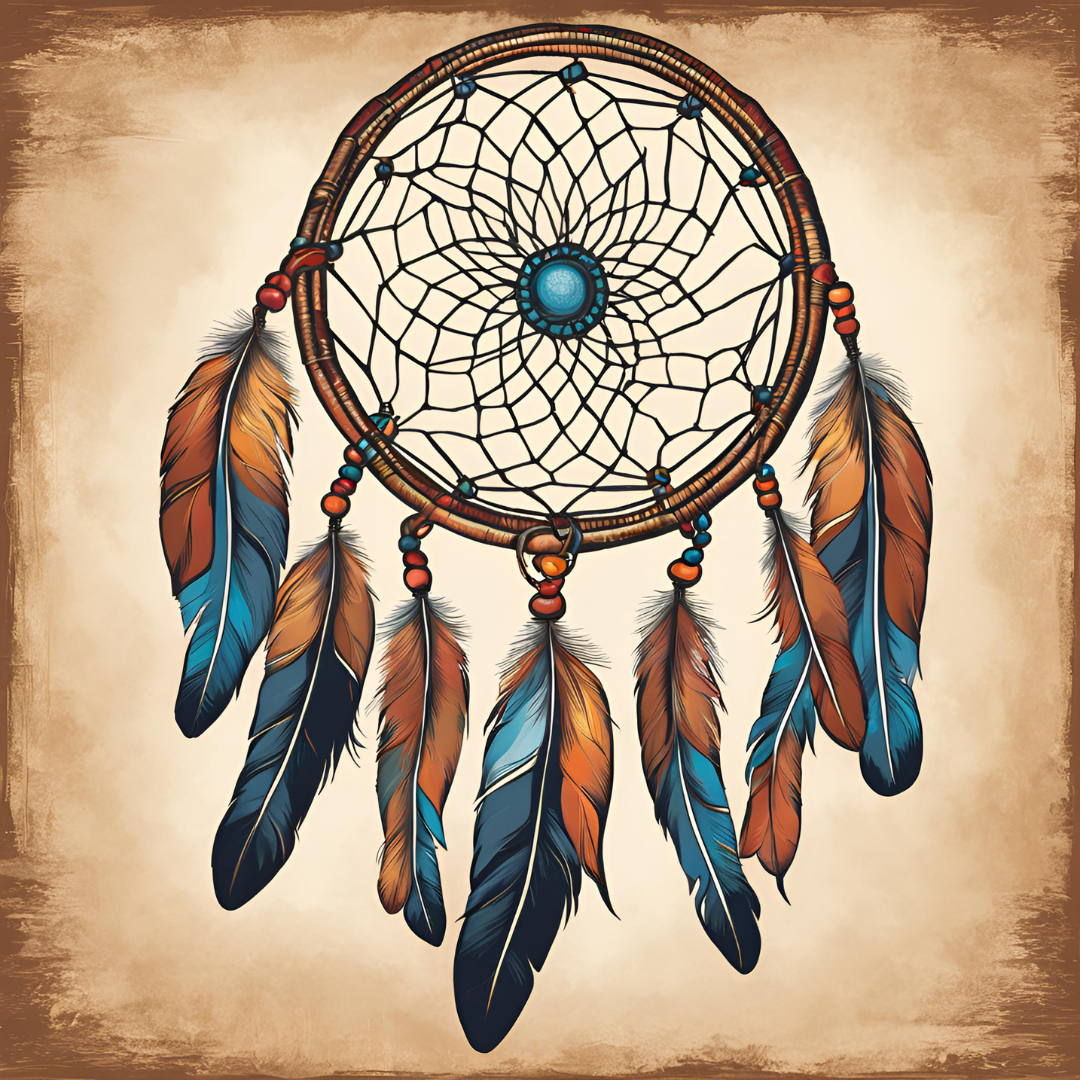The History of Indigenous Dream Catchers: Origins and Evolution Through the Ages

Dreamcatchers are now widely recognized objects around the world, often used as hanging decorations in homes. However, behind their aesthetic appearance lies a rich cultural history rooted in indigenous traditions. To better understand the deeper meaning of dreamcatchers, it is essential to look at their origins and how they have evolved over time.
Origins and Legends
Dreamcatchers originated among the indigenous peoples of North America, more specifically among the Ojibwe, also called Anishinaabe. According to legend, the dreamcatcher was created by Asibikaashi, the spider woman, who watched over children and people of the land. By weaving a delicate web, she caught bad dreams and prevented them from disturbing the children's sleep, allowing only good dreams to pass through, which slid gently along the hanging feathers.
THE dream catcher original was made of natural materials available in the immediate environment of the Ojibwe. The circle, often made from willow branches, represented the cycle of life and continuity, while the web, woven inside, symbolized protection and the filtration of dreams. The hanging feathers were usually those of a bird, chosen for their softness and lightness, guiding good dreams to the sleeper.
Meaning and Symbolism
THE dream catcher is much more than a simple handicraft object; it is a profound symbol of protection and spirituality. The circle is a representation of the cycle of life, the sun, the moon, and the seasons. The web, often associated with a spider, is woven in such a way as to capture bad thoughts and nightmares, holding them until they are dissipated by the light of day.
Each element of the dream catcher has a symbolic meaning. Beads embedded in the web may represent the spider itself or particular dreams. Feathers, often those of sacred birds such as the eagle, are hung to symbolize breath, air, and communication with the spiritual world. In some traditions, feathers were also associated with wisdom and freedom.
Diffusion across cultures
Over time, dreamcatchers spread beyond Ojibwe communities and became an iconic symbol for other indigenous peoples in North America. During the Pan-Indian Movement in the 1960s and 1970s, dreamcatchers were adopted as a symbol of unity among the various indigenous nations.
However, with their growing popularity, dream catchers have also been commercialized and mass reproduced, often without respect for their deeper cultural significance. This has led to a debate within indigenous communities about cultural appropriation and the importance of preserving the authenticity and meaning of dream catchers.
The dreamcatcher, despite its worldwide popularity, remains an object deeply rooted in indigenous traditions and spirituality. Its rich and complex history reminds us of the importance of understanding and respecting the cultural origins of the objects we admire. As a symbol of protection and spiritual connection, the dreamcatcher continues to captivate and inspire, while carrying the legacy of the people who created and preserved it throughout the ages.













